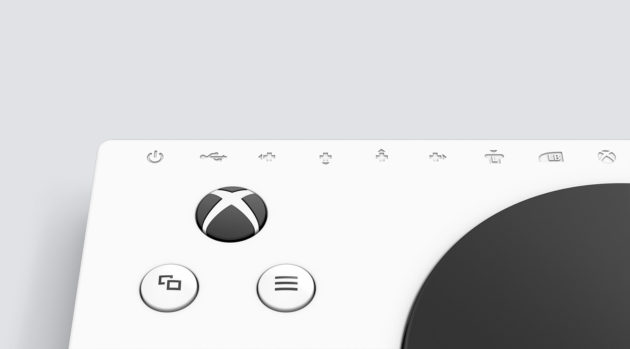LAS VEGAS ― More than 180,000 people attended CES to see the latest in consumer technology. From autonomous suitcases to a laundry-folding robot, there were many wacky gadgets making headlines throughout the week. But some of the most cutting-edge products at the show were designed for people with disabilities, demonstrating how the tech industry is increasingly focusing on accessibility technology as a way to make better products for everyone.
One example: a pair of glasses from eSight that helps people who are legally blind actually see — in some cases, even better than people with 20/20 vision.
“I was born with visual impairment with my corrective lenses,” said Rosa Henderson, a coach for eSight and a user of the glasses herself. “I’m only corrected to 20/200.”
In layman’s terms, this means Henderson can see one line below the big E on an eye chart. eSight glasses have a camera on the front, which display live images on two screens in a format that works for visually impaired eyes. Using a remote paired with the glasses, Henderson can control contrast, magnification and focus.
“Now with the unit, I’m able to sit in a normal classroom,” Henderson said. “I can see the teacher, the board, the materials being presented in real time.”
Before, Henderson said, she would have to ask for the class materials to be printed in advance. After class, she would have to sit with a tutor to go back over the material. Henderson is currently three classes away from getting an associate’s degree in business from the College of Southern Nevada.
According to the Bureau of Labor Statistics, the unemployment rates for people with disabilities is approximately twice the unemployment rate for people without disabilities.
Henderson believes that when she has applied for jobs in the past, employers would weed her out early in the application process.
“Most of the time, I wouldn’t get past the first interview,” she said.
Her message to employers is to give applicants with disabilities a chance to prove themselves, especially now that innovations in technology have allowed people with disabilities to achieve more than they could before.
“You might be bypassing people with really great skill sets in not giving them the opportunity, just because you think they may not be able to do it,” Henderson said. “People have to be more open-minded.”
Accessibility technology was a recurring theme at CES this year, underscoring the tech industry’s focus on this area. The CES Innovation Awards recognized seven honorees in the accessibility category.
One of these is Whill’s autonomous technology for electric wheelchairs. Whill intends to use this technology at airports. A user would enter their destination — such as a Starbucks or a gate number — in an app, and the power wheelchair would take them straight there.
Another honoree was the AI-powered prosthetic hand from BrainRobotics. Mincheng Ni wore the product as part of a demo at CES. Ni is a paralympian who lost his hands in an accident when he was 10 years old. Through a Mandarin interpreter, Ni told GeekWire that the product changed his life by helping him do things he usually cannot — like shaking hands or lifting objects.
Tech giants in Seattle are thinking about accessibility as well. Amazon, for example, offers features like the OpenDyslexic font on Kindle for people with reading disabilities.
Microsoft has also made serious efforts to push accessibility initiatives. In May, the company committed $25 million over five years to develop AI technologies to help people with disabilities. Inspired by his own experience as the father of a child with cerebral palsy, CEO Satya Nadella is an outspoken advocate for accessibility and universal design in tech.

The company offers the Xbox Adaptive Controller, designed to help gamers with limited mobility.
“I have a special needs child,” said Christopher “Fireball” Brady, a Microsoft employee. “I know that there are times when things might not work the way it works for everybody else. The idea of letting kids who normally wouldn’t be able to have fun to do things they normally watch their friends do, to me, that’s worth every penny of the investment it takes to create something like this.”
The Adaptive Controller was featured in a popular Microsoft ad during the holiday season. That commercial ended with the slogan, “When everybody plays, we all win.”
